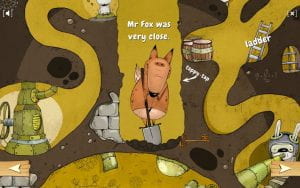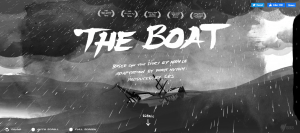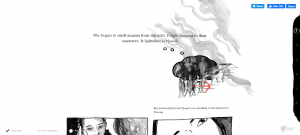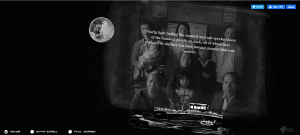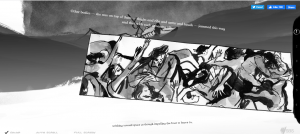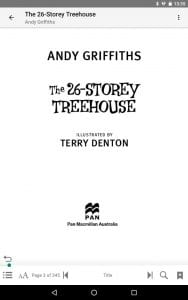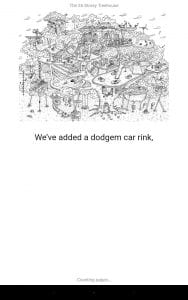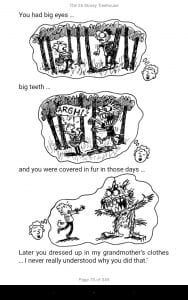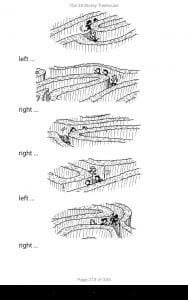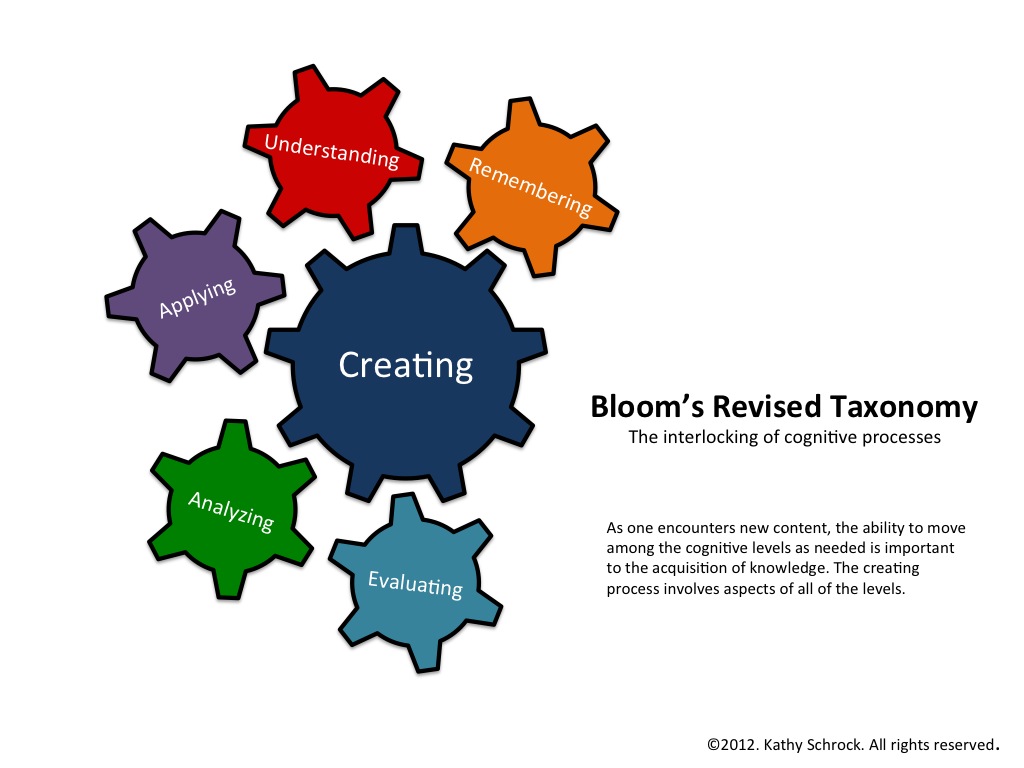The digital learning environment is becoming even more saturated with opportunities to view literature using technology. This means that students in the 21st century are maintaining a strong connection with both their Classroom Teacher (CT) and the Teacher Librarian (TL) when they are exploring literature in different formats (Burns, 2020a). These formats are constantly changing as the student and educator is exposed to a variety of digital learning programs. When I first started teaching in schools, I was encouraged that smartboards are the main source of technology to integrate into classroom lessons. This piece of technology is still incredibly relevant in displaying lesson content and uses interactive digital features for productive learning. The student’s knowledge can be expanded using the smartboard but is overall limited in the approach to get them thinking collaboratively with their peers compared to using other interactive devices.
During my time working as a TL at my current school, I have found that all education professionals need to be constantly updating their technology skill levels to teach lessons that inform and challenge our learners. While teaching primary aged students in the library, I discovered that experimenting with programs such as Mindomo (Expert Software Applications, 2020) allows more opportunities for students to broaden and display their understanding of a certain topic (Burns, 2020f). Eyal (2012) encourages this idea of self-directed learning and that students are given opportunities to work collaboratively with their peers. This provides the opportunity for education professionals to observe and support students with any technology issues that they may face during lessons.
I have had conversations with my colleagues prior to working on technology-based units of work at my school. Having conversations around how our library lessons can be improved with the use of collaborative team teaching provides more opportunities to learn from each other. This method of teaching encourages a variety of technology-based activities to be incorporated which focus on broadening student knowledge about different topics (Burns, 2020c). Encouraging my colleagues for their opinion about new teaching units that centre on technology is something that I strive to do prior to altering or adapting previous units of work. For example, after exploring the term transmedia in this course I have inquired with my colleagues about developing lessons using a program called Metaverse (Shapiro, 2019) that explores open-ended storylines. These lessons will focus on linking to relevant topics in current units of work that are taught throughout the school year.
The term transmedia has been a concept that I wanted to fully unpack during this course. I particularly wanted to explore different types of digital literature that could be easily accessible for students at different reading levels. Kalogeras (2013) discusses that merging storytelling across visual and written media is just one way to incorporate different ideas that appeal to the learner. Engaging with a variety of online enhanced and interactive narratives has certainly provided more ideas that I can explore, particularly for those non-readers at my school. This is just one way that I want to integrate methods of viewing and interacting with literature for students with various reading abilities (Burns, 2020b).
Using augmented and virtual reality allows each student to experience alternative ways of understanding and immersing themselves in their learning through technology (Mystakidis & Berki, 2018). Integrating audio and visual effects in this type of media enables students to explore their learning in an updated and exciting format. I enjoyed exploring the different types of enhanced and interactive books during our second assessment task for this course. Since completing this assessment task, I have found more examples of digital literature that I plan to use with my students during library lessons. It was particularly interesting to discover the strong connection that students have to digital storytelling as their level of engagement increases over time (Burns, 2020e). Implementing digital literature in different formats allows all students to view and interact with their learning in new, alternate ways.
Engaging learners with a new way to read stories, whether it be a self-scroll or a read-to feature, shows how advanced our level of storytelling has become. Having access to literature across multiple forms of technology allows the learner to be provided with more opportunities for exposure to learning in the 21st century. I strongly believe that the education professional should be able to integrate various examples of literature into their own lessons. This means that students can become more familiar with the format and how to interact with these stories (Burns, 2020d). Creating these experiences allows students to observe new, exciting ways of interacting with literature in a format that is constantly being improved and adapted to suit the learner.
References
Burns, S. (2020a, 25 July). Assessment 1 – Online reflective blog [Blog post]. Retrieved from https://thinkspace.csu.edu.au/simonb/2020/07/25/assessment-1-online-reflective-blog/
Burns, S. (2020b, 3 August). Transmedia and integrating technology into our busy curriculum! [Blog post]. Retrieved from https://thinkspace.csu.edu.au/simonb/2020/08/03/transmedia-and-integrating-technology-into-our-busy-curriculum/
Burns, S. (2020c, 10 August). Digital environments [Online discussion forum]. Retrieved from https://interact2.csu.edu.au/webapps/discussionboard/do/message?action=list_messages&course_id=_47762_1&nav=discussion_board_entry&conf_id=_94384_1&forum_id=_198785_1&message_id=_3170967_1
Burns, S. (2020d, 23 August). INF533 assessment 2 part a: Enhanced book review [Blog post]. Retrieved from https://thinkspace.csu.edu.au/simonb/2020/08/23/inf533-assessment-2-part-a-enhanced-book/
Burns, S. (2020e, 23 August). INF533 assessment 2 part b: Critical reflection [Blog post]. Retrieved from https://thinkspace.csu.edu.au/simonb/2020/08/23/inf533-assessment-2-part-b-critical-reflection/
Burns, S. (2020f, 4 September). Digital artefact creation and interpretations [Blog post]. Retrieved from https://thinkspace.csu.edu.au/simonb/2020/09/04/digital-artefact-creation-and-interpretations/
Expert Software Applications. (2020). Mindomo (4.3.2) [Windows app]. Google Chrome. Retrieved from https://www.mindomo.com/
Eyal, L. (2012). Digital assessment literacy—the core role of the teacher in a digital environment. Educational Technology & Society, 15(2), 37–49. Retrieved from http://web.a.ebscohost.com.ezproxy.csu.edu.au/ehost/pdfviewer/pdfviewer?vid=2&sid=05878c38-3aad-4a29-a8f1-1707fb0ba3d0%40sessionmgr4008
Kalogeras, S. (2013). Media-education convergence: Applying transmedia storytelling edutainment in e-learning environments. International Journal of Information and Communication Technology Education (IJICTE), 9(2), 1-11. doi:10.4018/jicte.2013040101
Mystakidis, S., & Berki, E. (2018). The case of literacy motivation: Playful 3D immersive learning environments and problem-focused education for blended digital storytelling. International Journal of Web-Based Learning and Teaching Technologies (IJWLTT), 13(1), 64-79. doi:10.4018/IJWLTT.2018010105
Shapiro, D. (2019). Metaverse (4.0.14) [Mobile app]. Google Play Store. Retrieved from https://play.google.com/store/apps/details?id=com.gometa.metaverse&hl=en_AU


